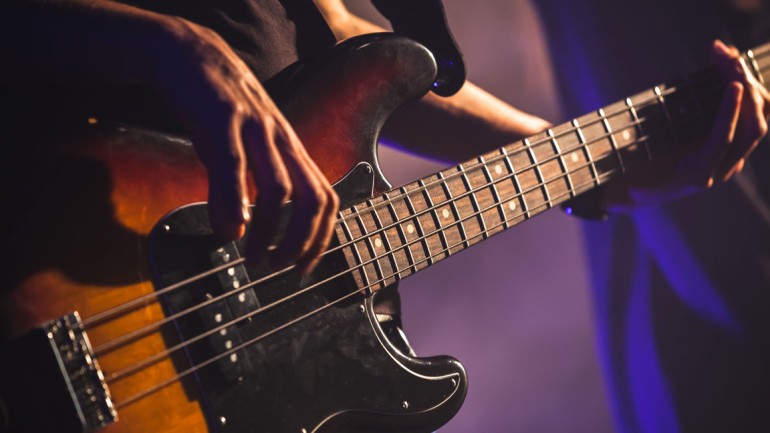Recording Tips for Building a Better Bass Track
From choosing string gauges to using optimal miking methods, a handful of thoughts for making your bass sound that much better the next time out

In my experience, electric bass has always been one of the most confounding instruments to record. For one thing it’s seldom a set-it-and-forget-it operation—levels that worked great on one session may be less effective the next time, particularly when working with different dynamics or instrumentation. In other words, it’s helpful to develop a tool set for bass that encompasses as wide a range of sounds and styles as possible.
Getting the right sound. First off, is your current bass set up a good fit for the song at hand? Understanding criteria such as neck scale (long/medium/short), pick-up sound (humbucker vs single-coil) as well as string type and gauge can help you determine what works best. For instance, vintage pop, Latin and jazz players might favor flatwound strings, which offer less articulation but provide a fuller bass sound. Roundwound strings, on the other hand, are brighter and more pliable, making them a better choice for funk/R&B, rock or any situation where greater string definition is preferable. Those who can’t make up their mind might go with hybrid sets such as halfwounds, which combine roundwound articulation with the feel of a flatwound string. String gauge is also key; roundwound users who want more bottom and less “doink” may opt for something slightly heavier (our Fender Jazz Bass, for example, sounds best when strung with GHS Bass Boomer Medium roundwounds 45-65-85-105).
Voicing choices. As with guitar, the tonality of the bass can change significantly as you move up the neck – that is, a passage played near the top of the fretboard would typically sound louder and rounder than the same notes in the first position (frets 1-5) or when using open strings. And of course, one can also alter the bass attack by playing with a pick versus thumb or fingers.
Miked, direct, or both? Options for tracking bass include miking the bass cabinet (or, if an upright bass, the instrument itself), using a direct-injection (or DI) transformer, or perhaps some of each. While just about any microphone will do, those expressly designed for capturing lower frequencies, such as the oft-used AKG D112 or Electro-Voice RE20, will usually yield satisfactory results. Newer entrants include the Lewitt DTP 640 REX, a dual capsule dynamic and back-electret condenser hybrid mic that offers ample articulation along with big bottom. Unlike guitar cabs which are generally close-miked, placement for bass is roughly 1-2 feet away from the speaker to give the sound waves a chance to expand (and also grab a bit of room sound).
Because of the excessive bleed, recording amplified bass live alongside other instruments, particularly in a modest-sized studio, can be challenging. If your space is too small to achieve adequate separation, you could opt instead to take the bass directly to the console through a DI box, eliminating unwanted leakage in the process. When going direct, options include passive boxes from makers like Behringer and Whirlwind, as well as active transformers (those with built-in pre-amps) such as the FET-based Countryman Type 85 DI. One caveat: without an amplified signal, bandmembers will require headphones in order to hear the bass during the session. Such issues can be avoided, however, by overdubbing bass separately, or, as mentioned above, using a mic/DI combination.
Making it fit. When it comes to mixing bass, a lot depends on what the rest of the multitrack looks like. For instance, having several layers of acoustic guitar or other low-end instrumentation can cause the bass to lose focus, requiring some corrective equalization. For truly prominent bass, the simpler the basic track, the better. Finally, be sure that the bass properly “locks” with the bass drum (as well as the rest of the rhythm section) by carefully balancing the volume and EQ of each so that the click of the drum beater appears to “push out” the bass notes.
All of this tech and tool talk should not obscure the primary rule – that is, coming up with a bass part that is equally melodic and dynamic, while also serving as a bona fide anchor for the rhythm section. Do that, and everything we’ve discussed above will only make your bass sound that much better.






Community
Connect with BMI & Professional Songwriters